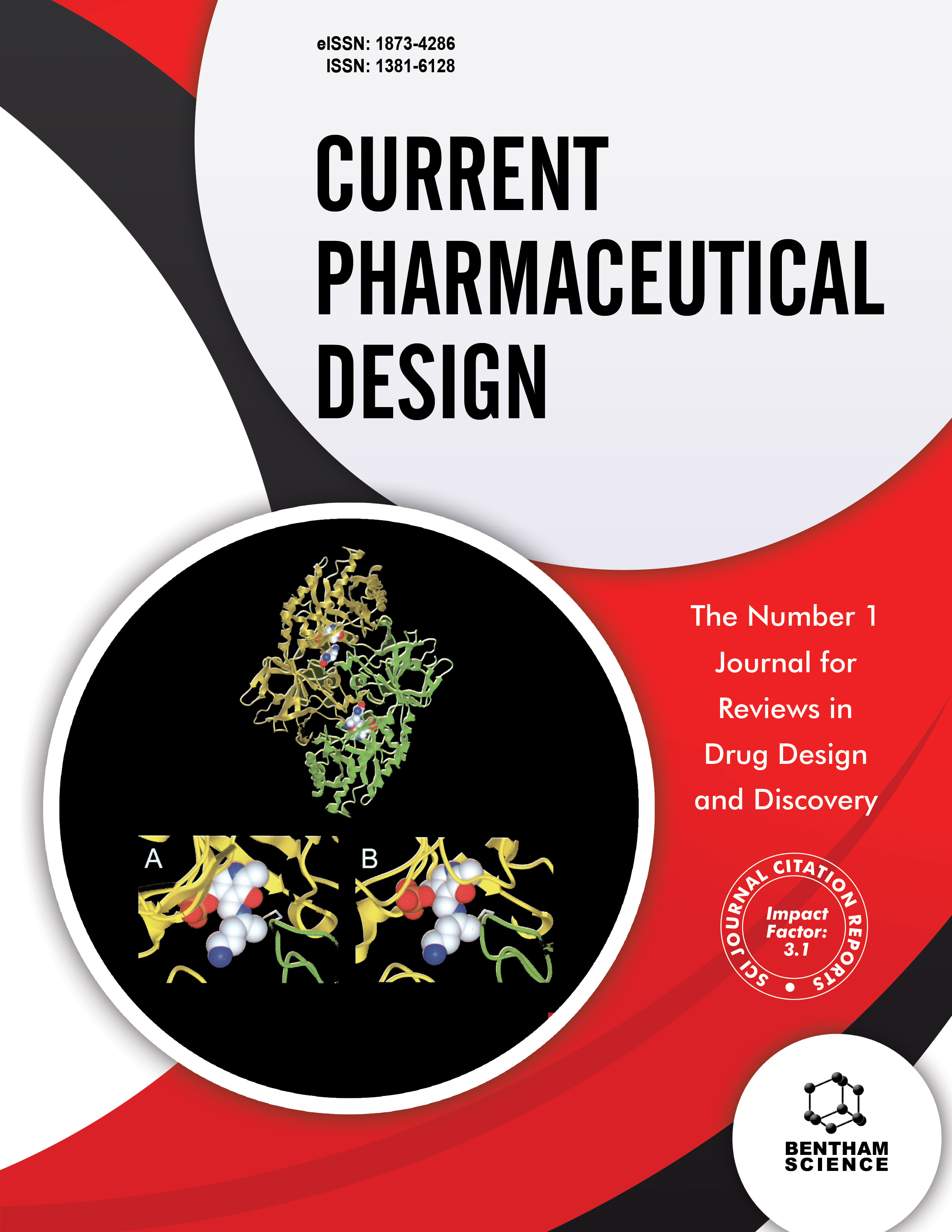-
oa Editorial [Hot topic: Current Formulations and Techniques of Drug/gene Delivery for Targeted Therapy and Tissue Engineering (Executive Editors: Chi-Hwa Wang and Sudhir H. Ranganath)]
- Source: Current Pharmaceutical Design, Volume 16, Issue 21, Jul 2010, p. 2296 - 2297
-
- 01 Jul 2010
- Previous Article
- Table of Contents
- Next Article
Abstract
Delivery of therapeutically relevant agents such as anti-cancer drugs, proteins, genes, siRNA, growth factors, etc has evolved tremendously through rational pharmaceutical design starting from drug discovery to delivery strategies. As diverse are the array of agents to be delivered and their applications, so are the formulations designed. The complexities in developing suitable delivery formulations are unforeseen. For instance, targeted drug delivery to cure various pathological conditions asks for highly specific targeting, overcoming barriers such as the blood brain barrier (BBB), tumor cell penetration, high gene transfection efficiency, high circulation time in the blood, etc. Also, tissue engineering to reconstruct damaged or lost organs demands drug/gene delivery capability and scaffolding. These examples are testimonial to the emergence of a plethora of pharmaceutical formulations and also an eye opener to academia's recent contributions in the field. This review series issue aims to introduce a few current pharmaceutical formulations dedicated to targeted and local drug delivery, and tissue engineering applications and their potential implications towards clinical development. Nanoparticulate formulations for drug delivery are the most popular for they have the ability to be taken up by the target due to their size and charge, reduced elimination by the reticuloendothelial system (RES), and easy administration. Yoo and coworkers [1] have reviewed the factors that control the systemic circulation of NPs and recent progress. They infer that a combination of strategies need to be applied to achieve significant improvement in circulation time such as size, surface shielding, mechanical properties, shape and exploitation of cells, etc. Gan and co-authors [2] have developed a system of docetaxel-loaded nanoparticles (NPs) of biodegradable copolymer, poly(lactic acid)-d-α- tocopheryl polyethylene glycol 1000 succinate (PLA-TPGS). The synthesis of the NPs by TPGS-emulsified PLA-TPGS was controllable and resulted in the desired NP size, higher stability and drug encapsulation efficiency in comparison to PVA-emulsified NPs. The NPs also demonstrated sustainable drug release, dose- and time-dependent cellular uptake by the MCF-7 cancer cells suggesting an internalization mechanism of endocytosis. Also, in comparison to Taxotere®, the NPs provided significantly higher therapeutic effect and lower side effect in vivo. Nanoparticulate targeted therapy by conjugating molecular markers differentially expressed on the cancerous cells has been reported by Phongpradist and coauthors [3] to achieve improved efficacy in leukemia therapeutics. They conjugated cIBR, a cyclic peptide specific for leukocyte function associated antigen-1 (LFA-1), to the surface of non-cytotoxic and colloidally stable nanoparticles. cIBR-coupled nanoparticles showed rapid binding and significantly higher uptake by leukemic cells as compared to untargeted nanoparticles. The level of LFA-1 expression level dictated the binding and internalization of targeted nanoparticles. The ability of nanoparticles to cross the bloodbrain- barrier (BBB) and achieve drug penetration into brain tumor is reported by Xie and coauthors [4]. Paclitaxel-loaded PLGA-based nanoparticles of around 200 nm developed by direct dialysis with different additives (vitamin E TPGS and polysorbate 80) were shown to enhance cellular uptake by MDCK monolayer more than surface-coated particles and inhibit C6 glioma cells on the topical side. Development of non-viral gene delivery vectors for clinical applications is on the rise. Recently, Khan and coworkers [5] have developed low molecular weight polymer with branched polyamidoamines with disulfide bonds and demonstrated complete retardation of DNA mobility at N/P of 5. They also demonstrated significantly higher gene transfection efficiency due to higher protonable nitrogen content and insignificant cytotoxicity in comparison to the conventional PEI vectors. On the basis of the cellular uptake and intracellular disposition mechanisms of the genes and carriers, Xu and coworkers [6] have proposed various modification and cell-targeting strategies to improve chitosan and polyamidoamies as dendrimers for gene delivery. They infer that the development of efficient non-viral vector mediated gene delivery depends on a good understanding of the uptake pathways, effects of the gene carrier characteristics on cellular entry and molecular crowding. A versatile protein drug delivery strategy “ATTEMPTS“ was developed by Huang and coauthors [7] by conjugating protein drugs to cell-penetrating peptides (CPPs). The initially disabled conjugates (prodrug) would start releasing the drug only after the complexes accumulate in the tumor sites by the antibody targeting function and was proven in both protein drugs and polymer-drugs with regulatable cell penetrating behavior. In another study, Hassan and Lau [8] have shed light upon the implications of drug/carrier properties, their effects on the particle dispersity and deposition in the lung in a pulmonary drug delivery scenario. Finally, Chen and Tong coworkers [9] have shown that degradable scaffolds which can release biomolecules with high bioactivity, give in for the growth of tissue are well suited for drug delivery in tissue engineering. Such scaffolds could be fabricated by a variety of techniques such as cross-linking, electrospinning, etc. They conclude that the interactions between cells and scaffolds often dictate the efficacy of drug delivery in tissue engineering.


